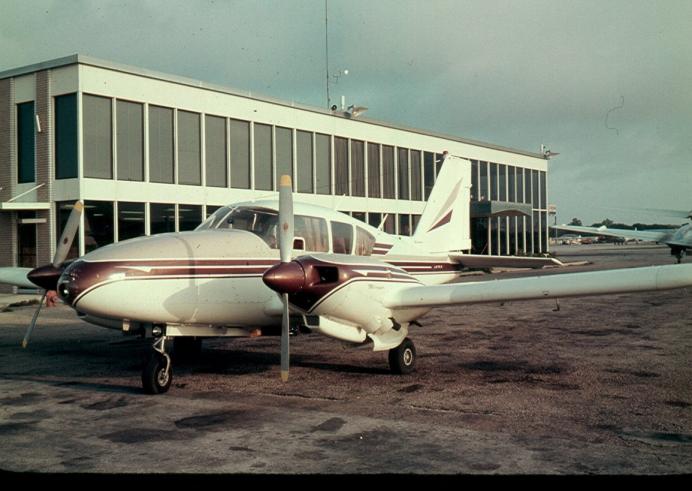Explore Memories
2010s
2000s
1990s
1980s
1970s
1960s
1950s
1940s
1930s
Visitors
Teachers
UT astronomers
Visiting astronomers
McDonald staff members
The Astronomy Department Airline: Nonstop Service Between Austin and Marfa
In the '70s, the Department operated a scheduled air charter service between Austin and Marfa. Strictly speaking, the airplane was "leased" and not "chartered." That word is important to the FAA, because leased aircraft (which operate under FAA Part 91) could do things that chartered aircraft (which operate under FAA part 135) could not (at least legally).
We used a Piper Aztec, a twin engine, turbo-charged piston powered airplane that seated 5 passengers plus the pilot. Our pilot was a World War 2 veteran (a P51 pilot during the war) named Jake Jacobsen. His actual first name was Ingvar, but he went by Jake.
The flight left Browning Aviation (a general aviation terminal at the old Robert Mueller airport) promptly at 8:00 a.m. every Monday and Friday. Two hours later we landed at Marfa, where we swapped vehicles with the staff that was departing the mountain back to Austin. The plane was refueled, Jake had his cup of coffee, and the flight left Marfa at 10:30 a.m. for the return to Austin.
Drinking that extra cup of coffee was risky for the passengers because there was no restroom on the airplane, and many of us arrived at our destination in agony, sprinting for the nearest restroom after getting off the airplane. There is a legendary story of one of our astronomers using the PUD (personal urinary device), a milk bottle sized contraption that Jake kept under the seats for extreme emergencies. Of course this device was used in full view of everyone on the airplane.
The vehicle left the TQ [temporary quarters, now called the Astronomers Lodge] for the Marfa airport at 9:30 a.m., and this made the last night of observing difficult, especially during long winter nights when observing could go on till 7:30 a.m. or later. After completing his last night, the observer had to convert his data to punched cards, a slow process, but the only method available to get stored data off the IBM 1800 computer for transport to Austin. Departing observers frequently carried up to 10 boxes of cards, each box containing 1500 punched cards.






